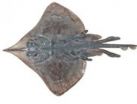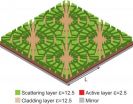New oil detection technique
2010-09-28
(Press-News.org) CSIRO scientists have developed a revolutionary technique for the rapid on-site detection and quantification of petroleum hydrocarbons (commonly derived from crude oil) in soil, silt, sediment, or rock.
Developed in collaboration with waste technology specialist, Ziltek Pty Ltd, the technique means that the presence of petroleum hydrocarbons can now be quantified simply by using a hand-held infrared spectrometer to take readings at the site of interest, without the need to take samples or perform any kind of processing.
The technique could be used for oil exploration purposes. It will also be particularly useful in assessing and monitoring contaminated sites such as coastal land following off-shore oil spills and industrial sites planned for urban redevelopment.
"Petroleum hydrocarbons are a valuable resource, but can also be pretty nasty environmental contaminants," says CSIRO scientist, Sean Forrester.
"They can remain in the environment for extended periods of time and can be harmful to wildlife, plants and humans. Better tools to detect them makes a rapid response possible."
The technique uses an infrared signal to detect the presence of petroleum hydrocarbons in samples.
By contrast, current methods use sampling and processing techniques that are labour intensive, time consuming, require sensitive equipment and are not well suited to on-site analysis.
"The ability of this new technique to rapidly detect the presence of contaminants at the site has the potential to provide significant cost advantages, in terms of reduced testing costs and the avoidance of delays," Mr Forrester says.
"Rapid analysis allows immediate measures to be undertaken to prevent further contamination or to limit contaminant spread."
A significant portion of the time and financial costs involved in assessing and remediating contaminated sites is consumed by monitoring and analysis.
By decreasing analysis time and reducing costs this new technique can assist in the fast and effective identification of oil and other petroleum products in the environment, as well as treatment and protection of environmental assets threatened by petroleum contamination.
INFORMATION:
END
ELSE PRESS RELEASES FROM THIS DATE:
2010-09-28
Scientists are reporting significant changes in the distribution of coastal fish species in south-east Australia which they say are partly due to climate change.
CSIRO's Climate Adaptation and Wealth from Oceans Flagships have identified 43 species, representing about 30 per cent of the inshore fish families occurring in the region, that exhibited shifts thought to be climate-related.
These include warm temperate surf-zone species such as Silver Drummer and Rock Blackfish that are breeding and have become more abundant, and range increases in Snapper and Rock Flathead. ...
2010-09-28
In the smooth, white, bunny-suited clean-room world of silicon wafers and solar cells, it turns out that a little roughness may go a long way, perhaps all the way to making solar power an affordable energy source, say Stanford engineers.
Their research shows that light ricocheting around inside the polymer film of a solar cell behaves differently when the film is ultra thin. A film that's nanoscale-thin and has been roughed up a bit can absorb more than 10 times the energy predicted by conventional theory.
The key to overcoming the theoretical limit lies in keeping ...
2010-09-28
Australian and American scientists have found a way of shrinking tumours in certain cancers – a finding that provides hope for new treatments.
The cancers in question are those caused by a new class of genes known as 'microRNAs', produced by parts of the genome that, until recently, were dismissed as 'junk DNA'. While much is still unknown about microRNAs, it is clear that they can interfere with how our genes are 'read'.
The current finding identifies one particular microRNA (microRNA 380) that appears to disable the king of tumour suppressors, the P53 gene. So important ...
2010-09-28
Boston, MA – The 2010 Annual Meeting & OTO EXPO of the American Academy of Otolaryngology – Head and Neck Surgery Foundation (AAO-HNSF), the largest meeting of ear, nose, and throat doctors in the world, will convene September 26-29, 2010, in Boston, MA.
Featuring more than 305 scientific research sessions, 594 posters, and several hundred instruction course hours for attendees, the annual meeting is a unique opportunity for journalists from around the world to cover breaking science and medical news. Reporters will have access to the latest research and clinical advances ...
2010-09-28
PACU PTH Facilitates Safe Outpatient Total Thyroidectomy
Presenters: William Pechter, MS; David Steward, MD; Jeffrey Houlton, MD; Naresh Panda, MS, FRCSEd
Time: 8: 32 am
Location: 254
Boston, MA – A study was performed reviewing thyroidectomies from March 2008 to November 2009, to determine if a serum parathyroid hormone (PTH)-based discharge algorithm can be used to safely facilitate outpatient total thyroidectomy.
In a presentation at the 2010 AAO-HNSF Annual Meeting & OTO EXPO in Boston, researchers revealed that 180 patients (mean age 48.9, 83.3% female) underwent ...
2010-09-28
28 September 2010 | GENEVA / NAIROBI / WASHINGTON D.C – Significant progress has been made in several low- and middle-income countries in increasing access to HIV/AIDS services, according to a new report released today. The report Towards Universal Access by the World Health Organization (WHO), the United Nations Children's Fund (UNICEF) and the Joint United Nations Programme on HIV/AIDS (UNAIDS) is the fourth annual report for tracking progress made in achieving the 2010 target of providing universal access to HIV prevention, treatment and care.
The report assessed ...
2010-09-28
The GOES-13 satellite has been keeping an eye on Tropical Storm Lisa and watched her birth, graduation to depression then tropical storm and back to depression. Now, Lisa has grown back to tropical storm status, but it may be short-lived.
At 11 a.m. EDT on Friday, Sept. 24, Tropical Storm Lisa had maximum sustained winds near 50 mph and she may strengthen and weaken over the weekend, but by Sunday colder waters will zap her energy source and she is forecast to be a depression.
Meanwhile, on Sept. 24, she was still frolicking in the eastern Atlantic, about 320 miles ...
2010-09-28
Montreal, September 26th, 2010 at 1:00 PM – An international study led by scientists at Université de Montréal and University of Oxford, has identified a gene associated with common migraines. Their findings show that a mutation in the KCNK18 gene inhibits the function of a protein called TRESK. TRESK normally plays a key role in nerve cell communication. Published today in Nature Medicine, this study may have implications for people who suffer from recurrent headaches, which include more than six million Canadians.
Previously, genes for migraine have been found only ...
2010-09-28
A team led by engineers and physicists at the University of New South Wales (UNSW) in Sydney, Australia, have developed one of the key building blocks needed to make a quantum computer using silicon: a "single electron reader". Their work was published today in Nature.
Quantum computers promise exponential increases in processing speed over today's computers through their use of the "spin", or magnetic orientation, of individual electrons to represent data in their calculations.
In order to employ electron spin, the quantum computer needs both a way of changing the ...
2010-09-28
Boston, MA – The 2010 Annual Meeting & OTO EXPO of the American Academy of Otolaryngology – Head and Neck Surgery Foundation (AAO-HNSF), the largest meeting of ear, nose, and throat doctors in the world, will convene September 26-29, 2010, in Boston, MA.
Featuring more than 305 scientific research sessions, 594 posters, and several hundred instruction course hours for attendees, the annual meeting is a unique opportunity for journalists from around the world to cover breaking science and medical news. Reporters will have access to the latest research and clinical advances ...
LAST 30 PRESS RELEASES:
[Press-News.org] New oil detection technique


